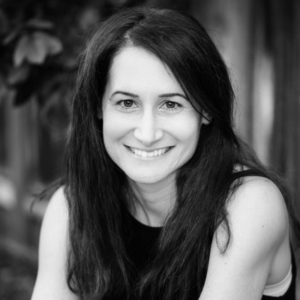This blog post was written by NCTE members and authors Michal Reznizki and David T. Coad.
As writing teachers, we are all familiar with the following scenario: You show up to class with a detailed lesson plan to discuss readings and teach new concepts. However, students are tired, bored, and don’t speak up. This is every teacher’s nightmare. What would you do in that situation?
As two writing instructors who have experienced the “silent treatment” in our classrooms many times, we decided to do something about it. Following an extensive search for sources, we have created a sweeping resource of activities to do in the classroom that not only engage students but also help them better learn the material. Dynamic Activities for First-Year Composition is a comprehensive collection of 96 engaging activities composed by writing instructors from all over the country. The activities address elements that are at the core of teaching first-year composition such as genre, rhetoric, reading strategies, argument, and revision.
The activities in the book, which include step-by-step instructions, give practical solutions to several classroom problems that have been amplified in these post-pandemic times.
Problem #1: Post-pandemic students are experiencing more social anxiety
We have noticed students are less comfortable interacting with their peers and speaking up in class as a result of online teaching and being isolated during the pandemic. This is where our book comes in: having effective activities that engage students helps them feel safe and also creates a welcoming atmosphere that encourages participation and engagement. Working in groups to write a “thank you” note to aliens, sorting monsters to understand synthesis, and taking a walk outside to brainstorm ideas are just a few examples of activities that engage students with their peers and class materials in a welcoming way.
Problem #2: There are not many practical resources for teachers
Having taught in the field for over a decade, we wished there was a resource like this for years to help us plan our classes. When we searched for books and articles on that topic, we mostly found materials that were highly theoretical, which are very useful, but not what we needed to plan and engage our students. What our book offers is the practical element, the hands-on approach–what all of us do in the classroom every day all the time–that is missing from our bookshelves. One activity that the two of us have used many times in our classes is “Understanding Analysis Vs. Synthesis (with Candy!)” by Ella R. Browning. In this activity, students analyze candies that we bring to class and discuss the differences between them to better understand how to analyze and synthesize sources. This fun activity makes it easy to discuss analysis and synthesis, concepts that are usually difficult to teach and understand.
Problem #3: Teacher community is lacking
While many writing instructors get ideas for class activities from colleagues during quick talks in the hallway or professional development venues, we have noticed that these conversations, at least in our institutions, have decreased during and after the pandemic. While we don’t have control over how many colleagues are coming to campus, the book helps with inciting conversations about teaching topics that we all struggle with. For instance, some of the activities in the book include ideas on how to address racism, how to discuss rubrics and grading practices, and how to emphasize linguistic justice. These topics can help with starting discussions on these issues in the department, leading to more equitable teaching practices. In the book, each activity includes a reflection that helps readers understand the instructor’s perspectives and goals with the activity. Using the activities from the book in the classroom and sharing them with colleagues can be a way to foster and strengthen connections with other writing instructors, building up and establishing a sense of community.
As teachers, we feel that engaging students in the learning process is on us. Our job is to maintain and manage classroom atmosphere and rhythm that lays the ground for a successful class session for both teachers and students. And the best way to do that is by using engaging activities that draw students in and make them active participants in their own learning. We hope that Dynamic Activities for First-Year Composition will be as useful for you as it is for us, transforming your classes, teaching practices, and teacher community for better learning in higher education.

Michal Reznizki is a lecturer at the University of California, Berkeley, where she teaches accelerated reading and composition. She is the author of numerous scholarly articles published in the journals Currents in Teaching and Learning and College Composition and Communication.

David T. Coad is a lecturer at Santa Clara University. He has taught composition at a range of institutions, including community colleges, state universities, and research institutions. David has published in Kairos and Computers and Composition.
It is the policy of NCTE in all publications, including the Literacy & NCTE blog, to provide a forum for the open discussion of ideas concerning the content and the teaching of English and the language arts. Publicity accorded to any particular point of view does not imply endorsement by the Executive Committee, the Board of Directors, the staff, or the membership at large, except in announcements of policy, where such endorsement is clearly specified.

